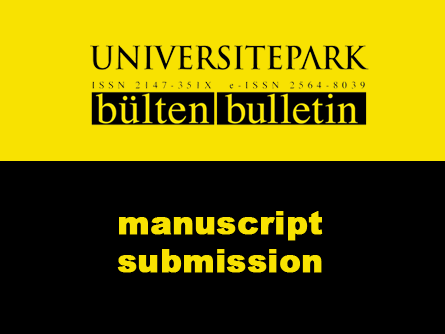Tuition Fee Settings of Universities in Azerbaijan
pp. 63-75 | Published Online: October 2023 | DOI: 10.22521/unibulletin.2023.121.4
Rima Mammadova
![]() Full text PDF |
427 |
130
Full text PDF |
427 |
130
Abstract
|
Background/purpose – The lack of research on higher education institution marketing, especially regarding tuition fee setting by Azerbaijani universities, is the reason for conducting this study. Hence, this study aims to identify the current state of tuition fee settings in state and private universities in Azerbaijan. |
Materials/methods – To achieve this, the research systematically examined peer-reviewed articles published in reputable journals. A search query that incorporated important terms such as financing of HEIs, students as customers, and price-setting approaches was applied to a number of databases. Data about 15 private and state universities was collected from reliable sources and the current situation in private and state Azerbaijani universities was discussed.
Results – Private universities in Azerbaijan should apply marketing strategies more and pay attention very carefully to their price-setting approach in order to attract more students and survive in the current marketplace. Price/tuition fee-setting policies for all universities in Azerbaijan should be prepared and approved by the government in order to prevent artificially increased prices.
Conclusion – This study makes a unique contribution to Azerbaijani science, and may also be a valuable resource for researchers interested in higher education marketing in Azerbaijan.
Keywords: Universities, tuition fee, price setting, Azerbaijan, university marketing
ReferencesAndrews, R. J., & Stange, K. M. (2019). Price Regulation, Price Discrimination, and Equality of Opportunity in Higher Education: Evidence from Texas. American Economic Journal: Economic Policy, 11(4), 31-65. https://doi.org/10.1257/pol.20170306
Armstrong, G., Adam, S., Denize, S., & Kotler, P. (2005). Principles of marketing. Pearson Education.
Chapleo, C. (2011). Exploring rationales for branding a university: Should we be seeking to measure branding in UK universities? Journal of Brand Management, 18(6), 411-422. https://doi.org/10.1057/bm.2010.53
Eftimov, L., Trpeski, P., Gockov, G., & Vasileva, V. (2016). Designing a balanced scorecard as strategic management system for higher education institutions: A case study in Macedonia. Ekonomika, 62(2), 29-48. https://doi.org/10.5937/ekonomika1602029e.
Gillespie Finney, T., & Finney, R. Z. (2010). Are students their universities’ customers? An exploratory study. Education+ Training, 52(4), 276-291. https://doi.org/10.1108/00400911011050954
Goksu, A., & Goksu, G. G. (2015). A Comparative Analysis of Higher Education Financing in Different Countries. Procedia Economics and Finance, 26, 1152-1158. https://doi.org/10.1016/s2212-5671(15)00945-4
Guilbault, M. (2018). Students as customers in higher education: The (controversial) debate needs to end. Journal of Retailing and Consumer Services, 40, 295-298. https://doi.org/10.1016/j.jretconser.2017.03.006
Johnstone, D. (2003). Cost Sharing in Higher Education: Tuition, Financial Assistance, and Accessibility in a Comparative Perspective. Sociologický časopis/Czech Sociological Review, 39(3), 351-374. https://doi.org/10.13060/00380288.2003.39.3.04
Little, M. W., O’Toole, D., & Wetzel, J. (1997). The Price Differential’s Impact on Retention, Recruitment, and Quality in a Public University. Journal of Marketing for Higher Education, 8(2), 37-51. https://doi.org/10.1300/j050v08n02_04
Loomis Hubbell, L. W., Massa, R. J., & Lapovsky, L. (2002). Using benchmarking to influence tuition and fee decisions. New Directions for Higher Education, 2002(118), 39-64. https://doi.org/10.1002/he.55
Marcucci, P. N., & Johnstone, D. B. (2007). Tuition fee policies in a comparative perspective: Theoretical and political rationales. Journal of Higher Education Policy and Management, 29(1), 25-40. https://doi.org/10.1080/13600800600980015
McPherson, M. S., & Schapiro, M. O. (1999). The student aid game: Meeting need and rewarding talent in American higher education. Princeton University Press.
Melnikov, S. V. (2015). Dynamic monopoly pricing under the reference price effect. Проблеми економіки, 1, 361-365. http://nbuv.gov.ua/UJRN/Pekon_2015_1_47
Miller, B. (2010). The price of higher education: how rational is British tuition fee policy? Journal of Higher Education Policy and Management, 32(1), 85-95. https://doi.org/10.1080/13600800903440576
Mohd Amir, A., Md Auzair, S., Maelah, R., & Ahmad, A. (2016). Pricing for higher education institutions: a value-based approach. International Journal of Educational Management, 30(6), 929-940. https://doi.org/10.1108/ijem-08-2015-0110
Naylor, R., Dollinger, M., Mahat, M., & Khawaja, M. (2020). Students as customers versus as active agents: conceptualising the student role in governance and quality assurance. Higher Education Research & Development, 40(5), 1026-1039. https://doi.org/10.1080/07294360.2020.1792850
Neill, C. (2009). Tuition fees and the demand for university places. Economics of Education Review, 28(5), 561-570. https://doi.org/10.1016/j.econedurev.2009.01.002
Rekettye, G., & Liu, J. (2018). Pricing: The New Frontier. Transnational Press.
Rekettye, G., & Pozsgai, G. (2015). University and place branding: The case of universities located in ECC (European Capital of Culture) cities. Ekonomski vjesnik: Review of Contemporary Entrepreneurship, Business, and Economic Issues, 28(S), 13-24.
Rekettye, G., & Rappai, G. (2012). How to Set Tuition Fees at Public Universities in Hungary. International Journal of Business Insights & Transformation, 5(3), 64-68. https://hrcak.srce.hr/137444
Shin, J.-C., & Kim H.-H. (2013). Tuition Rising in Competitions for a World-class University: Cost Sharing or Cost Transfer? Asia Pacific Journal of Educational Development, 2(2), 1-11. https://doi.org/10.6228/APJED.02.02.01
Shin, J.-C., Kim, H.-H., & Choi, H. S. (2014). The evolution of student activism and its influence on tuition fees in South Korean universities. Studies in Higher Education, 39(3), 441-454. https://doi.org/10.1080/03075079.2014.896180
Speck, B. W. (2010). The growing role of private giving in financing the modern university. New Directions for Higher Education, 2010(149), 7-16. https://doi.org/10.1002/he.376
State Statistical Committee of the Republic of Azerbaijan. (2018). Azerbaijan in figures 2018. Baku.
Sutin, S. E. (2018). Reforming higher education from within: Lessons learned from other mature sectors of the economy. International Journal of Educational Development, 58, 18-25. https://doi.org/10.1016/j.ijedudev.2016.11.003
Van Andel, J., Bótas, P., Charles, P., & Huisman, J. (2012). Consumption values and empowerment of the student as customer: taking a rational look inside higher education’s ‘Pandora's Box’. Higher Education Review, 45(1), 62-85.
Zdziarski, E. L. (2010). A small college perspective on institutional budget issues. New Directions for Student Services, 2010(129), 21-27. https://doi.org/10.1002/ss.348
UNIBULLETIN News!
► New issue coming soon! (Volume 13 Issue 1, 2024)
► Call for Papers
UNIBULLETIN is calling for submissions. Authors are invited to submit papers from the all fields of the Education (General) and Social Sciences (General) in the international context. All submissions should be presented only in English.
